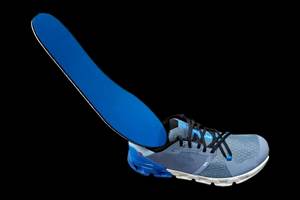Earth Stewardship: The future of composites development
Investing in Manufacturing Communities Partnerships holds great promise for advanced composites.
Share
Although composites development has long been critical for national security and strong commercial leadership, a new emphasis on it is being demanded by national and global priorities. Among these are intelligent use of natural resources — including more efficient energy management — reduced pollution and human effects on climate, longer-lived products and an improvement in jobs, which collectively we can call Earth Stewardship.
In past periods in which certain goals were seen as high national priorities, the US federal government has taken a two-pronged approach: 1) creation of a strong central entity to coordinate efforts (e.g., NASA, to advance US space technology) and 2) distributed entities that work with more traditional government funding sources, such as the National Science Foundation (NSF), the US Department of Defense (DoD), the US Department of Energy (DoE) and the Defense Advanced Research Projects Agency (DARPA). Today, both models are being pursued because composites are key to maintaining a competitive advantage, ensuring national defense, and achieving Earth Stewardship goals.
The importance of composites has led to the establishment of the Institute for Advanced Composites Manufacturing Innovation (IACMI, Knoxville, TN, US) with a huge infusion of monetary and logistical support from the DoE (including Oak Ridge National Laboratory, Oak Ridge, TN), many industrial partners, state governments, professional societies and educational institutions. The progress of IACMI in its short existence has been good and bodes well for successful accomplishment of its goals.
Other federal goals, outside those addressed by IACMI, are being promoted through the traditional grants from federal agencies (e.g., the Material Genome Initiative or MGI).1 The MGI sets goals for reducing the time to develop new composite materials and products, chiefly through collaborative materials research efforts; integrating experiment, computation and theory with advanced tools and techniques; making digital data accessible; and creating a world-class materials science and engineering workforce. Funding for MGI projects is granted through NSF, DoD, the National Institute of Standards and Technology (Gaithersburg, MD, US) and others.
A relatively new but very important initiative, Investing in Manufacturing Communities Partnership (IMCP), holds great promise for advancing composites development. The only cost to the federal government for IMCP is for the US Department of Commerce to designate geographically compact areas that have a focused expertise in manufacturing and then to administer their occasional meetings. So far, 24 communities have been designated, with 10 focused on composites and transportation.2 These IMCPs meet regularly and coordinate efforts to win government contracts, cooperate in technology transfer and share other information that helps the tide of composites development raise all ships. Notably, IMCPs are given priority in contract awards. One IMCP is the Utah Advanced Materials and Manufacturing Initiative (UAMMI), which has established a structure and plan that is creating a stir within the IMCP community and the composites world in general.
A non-profit, state-sponsored, industry-led organization, UAMMI was founded to bring together various advanced composites stakeholders in Utah. More than 60 participants include advanced material manufacturers and suppliers; manufacturers of aerospace, medical, industrial, recreational and other products that contain advanced materials; composite manufacturing equipment manufacturers; military installations, repair depots; service, design and analysis companies; composites-related professional societies; universities, applied technology centers, community colleges, K-12 school districts and the state office of education and state and local government representatives as well as the Manufacturing Extension Partnership (MEP) in Utah and the Utah Manufacturers Assn.
What are UAMMI’s goals? The following four were identified through an initial survey of Utah composites companies:
1. Give members greater visibility in the composites supply chain.
2. Help companies with workforce supply and development.
3. Enrich the networking capability of companies .
4. Help companies increase their business, especially through improved technologies, analysis and linkages to win contracts.
UAMMI has received a grant from the Office of Economic Adjustment to meet individually with all Utah composites companies and define their supply chains, discuss workforce issues, survey networking practices and discuss linkages and other opportunities.
When this survey is completed, a supply chain tool and analysis method will be developed to enable UAMMI to organize communication across the supply chain; identify supply chain weaknesses and gaps; assist in matchmaking (including research); identify market opportunities; assist in vendor qualification and assessment; and use resources and expertise more efficiently. Companies have been open in sharing their information with the promise of access to their data only by the UAMMI staff. Some “holes” in the supply chain have already been identified and suggestions made to other companies for expanding their products to fill the voids.
The workforce component will identify the skills companies need: develop assessment tools for new employees; improve hiring methods; strengthen offerings from universities, community colleges, applied technology colleges and high schools; and coordinate in-house training for existing employees. Curricula for high school courses in composites and manufacturing have been written and labs have been established, courses have begun and, with SAMPE Foundation support, a course to teach high school teachers about composites was held at the last CAMX show.
To improve the networking effort, an all-day seminar has been scheduled with state and national speakers for March 1, 2017, in conjunction with the Wasatch Front Materials Expo, sponsored by the Utah SAMPE chapter. The IMCP community has been invited to attend both, and to meet as IMCP units on the following day.
Technology advancements are being facilitated through the establishment of a “virtual” innovation center. Key equipment will be located where all UAMMI members can access it at preferred rates (sometimes free). Also, the Utah MEP has arranged for similar access at the University of Utah at reduced rates.
UAMMI also has coordinated activities led by the University of Utah in cooperation with the University of Kentucky and several Utah companies that secured a contract to develop a system that makes coal-based pitch carbon fiber (thus supporting economically depressed coal-producing areas). This contract has been funded by the US Department of Commerce, and the program is being linked to IACMI and Oak Ridge National Laboratory because the hoped-for output will be an automotive-grade carbon fiber at a more favorable price.
The model of strong composites-oriented, industry-led, state-coordinated organizations, such as UAMMI, especially in concert with other IMCPs, is a powerful new way of supporting composites development. Companies in these organizations benefit from new technologies and linkages for contracts, universities have greater interactions with government and industry, and governments and economies see growth.3
References
1 Materials Genome Initiative Strategic Plan, Materials Genome Initiative, National Science and Technology Council, Committee on Technology, Subcommittee on the Materials Genome Initiative, December 2014.
2 https://www.eda.gov/imcp/communities/
3 For more information, contact: UAMMI executive director Jeff Edwards, jedwards@xmission.com.
Related Content
Running shoe insoles get a lift with thermoplastic fiberglass tapes
FlexSpring insoles take advantage of unidirectional, continuous fiberglass and thermoplastics to enable next-level performance for the everyday runner.
Read MoreLighter, stronger, faster bionic hand aided by composites design
Psyonic’s touch-sensing prosthetic hand leverages bionic technology, 3D printing and a carbon fiber composite exterior for light weight, high strength and high-tech functionality.
Read MoreTime Bicycles to modernize composite bicycle manufacturing
With the aid of KraussMaffei, Clemson University and SC Fraunhofer USA Alliance, Time anticipates a transition to HP-RTM for more efficient carbon fiber bike frame manufacture, plus a new facility in South Carolina.
Read MoreMito Materials graphene amplify composite fly fishing rod performance
Functionalized graphene addition to premium-performance Evos and Evos Salt fly rods by St. Croix Fly enables faster recovery, increased torsional rigidity and improved strength-to-weight ratios.
Read MoreRead Next
VIDEO: High-volume processing for fiberglass components
Cannon Ergos, a company specializing in high-ton presses and equipment for composites fabrication and plastics processing, displayed automotive and industrial components at CAMX 2024.
Read MorePlant tour: Daher Shap’in TechCenter and composites production plant, Saint-Aignan-de-Grandlieu, France
Co-located R&D and production advance OOA thermosets, thermoplastics, welding, recycling and digital technologies for faster processing and certification of lighter, more sustainable composites.
Read MoreAll-recycled, needle-punched nonwoven CFRP slashes carbon footprint of Formula 2 seat
Dallara and Tenowo collaborate to produce a race-ready Formula 2 seat using recycled carbon fiber, reducing CO2 emissions by 97.5% compared to virgin materials.
Read More

























